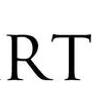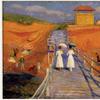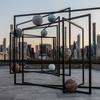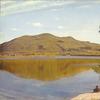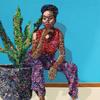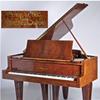“Abstract 50’s Masters (Where Were the Mistresses?)”
- NEW YORK, New York
- /
- September 30, 2016
Thru Saturday, February 25th 2017
Abstract art has roots in the late 19th century and reached ascendance in the late 40’s – 50’s. Philip Pavia (sculptor), one of the leaders of “the Club and his publication “It is” was seminal in the championing of abstract art. Our exhibition emphasizes the pluralistic nature of abstraction: gesture, geometric, and introspection.
Abstract expressionism uses gesture and was an important development in abstract art (Action painting). Most of the artists began traditionally using grids and sketches, as they were taught. They went on to their individual development where the act and thought was important rather than the space that was there. Our artists are considered mainly 2nd generation abstract expressionists. They were lucky to have the guidance of the stars of the first generation. Some of our artists went to the Art Students League and others took classes with the master artists. Many of them belonged to “the Club” and led to the organizing of the Ninth Street show in 1951 which unified the downtown artists and connected them to the public. The annual exhibits continued uptown at the Stable Gallery from 1951-1957.
Gallery 1:
Peter Agostini, Seymour Boardman, Ilya Bolotowsky, James Brooks, Lawrence Calcagno, Nassos Daphnis, Beauford Delaney, Friedel Dzubas, Jimmy Ernst, Joseph Fiore, John Hultberg, Ibram Lassaw, Michael Loew, Leonard Nelson, Joe Overstreet, Phillip Pavia, Misha Reznikoff, Richards Rubens, Thomas Sills & Wilfrid Zogbaum.
Peter Agostini was known as a Plaster Master. He created evocative and lyrical sculptures. The “Saracen” is one of his few bronzes, another copy is in the Smithsonian Museum. Seymour Boardman created contemplative landscapes. His work reduced complicated image to its essence through a simple play with basic color planes while the original background, color lines pierce, bend and twist the negative space. Ilya Bolotowsky was a prolific artist involved in painting, sculptures and mural production. His visually ordered works reveal the influence of Piet Mondrian’s geometry. James Brooks stated that “My painting starts with a complication on the canvas surface, done with as much spontaneity and as little memory as possible. This then exists as the subject. It is as strange as a new still life arrangement as confusing as any unfamiliar situation”. Lawrence Calcagno with the use of linear brush strokes created meditative and colorful landscapes. Nassos Daphnis observed that “nature works in order to create form in an orderly fashion”. His works, often combined exhibited as site-specific installations, mirror nature with a geometric precision. Beauford Delaney’s agitated brushwork, flattened space, and all-over composition were characteristic of contemporary Abstract Expressionism. Friedel Dzubas’s mature paintings since the 1960’s assimilate his early interest in German Romanticism and Expressionism into post-war American abstraction. Jimmy Ernst’s power of composition and paint handling reasserted control over his imagery in later work. Joseph Fiore’s abstractions subtly combine inspirations of a purity that comes from the solitude of the nature environment in Maine. John Hultberg’s dramatic landscapes develop with a prophetic and apocalyptic atmosphere. Ibram Lassaw was an edgy and innovative sculptor whose deft designs open whole spaces into organic systems. Michael Loew’s geometric abstraction retains a sensuous esthetic balance. Leonard Nelson, is known for his gestural abstractions, which he later simplified into color-field paintings. Joe Overstreet integrates painting with sculptural space by combining his materials in different ways. His work thematically challenges dimensional boundaries. Philip Pavia, sculptor, co-founder and director (from 1948 to 1955) of “The Club” emphasizes in his work from abstract marbles through archaic heads in bronze and terra-cotta the relevance between formality, spontaneous gesture and materials. Misha Reznikoff’s piled layers of abstract figures enhance the depth of visual landscapes. Articulate and dynamic brushwork invite the viewer to new vigorous dimensions. Richards Rubens’ series “Venetian Fragments” breaks the dictates of the flat two-dimensional work and remind that he is mainly a gestural artist, who shapes and curves his canvases. Thomas Sills – much of his work embodies a transitional movement between Abstract Expressionism and color field painting. Sills had of many exhibitions at Betty Parsons Gallery. Wilfrid Zogbaum’s dynamic steel structures bear a kinship to primordial ancestors.
Gallery 2:
ERNEST BRIGGS
Ernest Briggs’ volcanic abstract paintings from the 1950’s place him firmly in the ranks of the New York avant-garde. He sought inspiration in nature. The changing qualities of the natural world are conveyed through his ragged and expressive brushwork. A second generation Abstract Expressionist, Briggs represents “action painting.” His paintings are alive; they offer viewers an experience that is both mysterious and known. He participated in several Whitney Museum Annuals and in 1956 was included in the Museum of Modern Art’s exhibition “12 Americans” curated by Dorothy Miller.
For more information, please contact the Gallery:
www.anitashapolskygallery.com | anitashapolsky@gmail.com | 212-452-1094
Gallery Hours: Tuesday – Friday 11-6 and Saturday by appointment
Contact:
Anita Shapolsky2124521094
anitashapolsky@gmail.com
152 E 65th Street (patio entrance)
New York, New York


